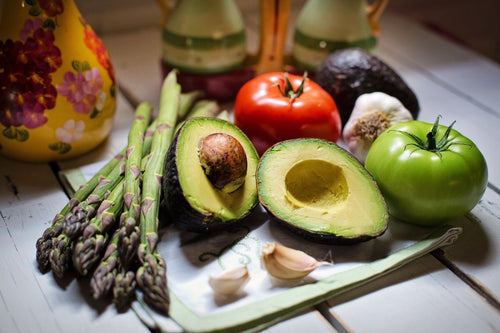L'angoisse et les phobias touchent de names personnes, affectant leur quotidien. Dans cet article, nous explorerons la nature de l'angoisse, ses symptômes, son influence sur la vie quotidienne, ainsi que les phobias courantes. Découvrez des approaches psychologiques pour mieux gérer le stress, et des techniques naturelles qui uvent soulager l'anxiété.
Apprivoiser l'angoisse: Explorer ses facettes et find l'équilibre
How to define the angle?
L'angoisse, this émotion complexe qui nous taraude parfois, peut être définie comme un état de tension psychologique et physique, caractérisé par des inquiétudes, des peurs et un sentiment d'apréhension face à l'inconnu. Bien que l'angoisse soit une réaction naturelle de our organisme, elle peut devenir problématique lorsqu'elle prend une place démesurée dans notre vie.
Loin d'être a simple appréhension, the language is traditional for an ensemble of physiological and psychological reactions. Elle se manifeste sous diverses forms, allant de l'anxiété diffuse à la panic intense, en passant par les phobias specific. - L'angoisse is a réaction émotionnelle naturelle, visant à nous preparer à faire face à a menace réelle ou imaginaire. - It is characterized by a tension in the interior, a nervous system, obsessive impulses and a hyperactivité of the autonomic nerve system. - The message can also be used in no time without problems and no adapters in new situations. The problem is that it is general and affects the quality of the product.
The attack is a part of the integrated human condition, which can be read as a reconnaissance and as a channel that is essential for preserving our mental health.
Quels sont les symptômes communs de l'angoisse ?
Les manifestations de l'angoisse can be of extreme variety, touching on the fois of our corps and our esprit. Bien que chacun pisse vivre l'angoisse de manière unique, il existe certains symptômes récurrents qui characterisent cet état de tension.
The physical symptoms of the attack include: - An acceleration of the rhythm of the heart and respiration - The maux d'estomac, de la nauseée or the douleurs abdominales - Des tremblements, des sueurs et des sensations de picotements - The maux de tête, the vertiges or a fatigue intense - A muscular tension, notamment au level du cou et des épaules
On the psychological plan, the language can be traced back to: - Des inquiétudes excessivees, des ruminations et un sentiment de peur irrationnel - Difficulty in concentration and decision-making - An irritability, an unstable humeur and the sautes d'humeur - The pensées catastrophistes and a sentiment de perte de control - Des troubles du sommeil, tels que des insomnies ou des cauchemars
- The symptoms of the attack vary in intensity and frequency according to the individual, and can also increase in temperature.
- It is important to have so many manifestations, which can have a significant impact on the quality of the product and the bien-être general.
Reconnaître les multiples facettes de l'angoisse est le premier pas pour mieux la comprendre et la gérer.
Comment l'angoisse affecte-t-elle notre quotidien ?
L'angoisse, lorsqu'elle devient trop envahissante, peut avoir de profondes répercussions sur notre vie quotidienne. Elle peut alterer notre capacité à fonctionner normalement, à entrittir des relations saines et à prendre soin de nous-mêmes.
On the professional plan, the language can be trained: - A low productivity and operational efficiency - Des difficultés à prendre des decisions et à gérer les imprevus - An absenteeism and a manque of motivation - The conflicts with the collègues and the problems of communication
In the personal sphere, the voice can be compared: - The quality of relations with the friends, the family and the friends - The capacity to benefit from moments of relaxation and relaxation - The accommodation of the quotidiennes and the organization of the foyer - La prize en charge de sa santé physique et mentale
The manière plus general, the sound can be heard from the répercussions on: - The bien-etre émotionnel, with a humeur morose and a faible estime de soi - The quality of the picture, and the capacity to view and attach its objects - The autonomy and independence limit the possibilities of exploration and risk
- Lorsque l'angoisse devient envahissante, elle peut isoler l'individu, entraver son développement personnel et nuire à son équilibre global.
Apprivoiser l'angoisse nécessite une approachroche holistic, prenant en compte tous les aspects de notre vie pour retrouver un sentiment de sérénité et d'accomplissement.
Les mystères des phobias: de la peur à l'anxiété paralysante
What difference is there in a normal phobia?
The piece is a natural emotional response and a real danger face. This is an essential survival mechanism. Cependant, when the piece is deviant irrational, disproportionnée and incontrôlable, it transforms into phobia.
A phobia is characterized by an intense stress and irritation of an object, a situation or a specific activity.
- Elle is souvent déclenchée par des stim inoffensifs qui n'inspirent pas de peur chez la plupart des gens.
- The personne phobique a consciente que sa peur est excessive, mais elle n'arrive pas à la maîtriser.
- This can provoke fear, anxiety and distress and stresses that are now considered according to the quotidienne.
Contrairement à la peur normal, the phobia is a handicap that perturbs the function of the individual in his personal, social and professional activities.
Comment se developed les phobias?
The origins of phobias are multifactorial, implicit in biological, psychological and social factors.
The principles of risk are:
- Des expériences traumatiques liees à l'objet de la phobia
- A conditionnement negative à la suite d'un événement particulièrement stressful
- The influence of the entourage and the apprentissage par observation
- A genetic predisposition to anxiety and stress
- The perturbations in the cerebral function, notamment in the circuits of the water
Les phobias are construisent general de manière progressive, à travers des cycles complexes d'évitement, de renforcement de la peur et de generalization à d'autres situations.
Quelles sont les phobias les plus courantes et leurs impacts ?
Bien que les phobias should prendre des forms très variées, certaines sont plus fréquentes que d'autres. Voici un aperçu des phobias les plus répandues et de leurs conséquences.
Les phobias les plus courantes:
- Phobie sociale: peur intense des social situations et de l'evaluation par les other
- Phobia des animals: araignées, serpents, dogs, etc.
- Phobia des espaces clos: claustrophobia
- Phobia of espaces ouverts: agoraphobia
- Phobie des voyages en avion: aérophobia
The effects of phobias:
- Social isolation and activity limitation
- Difficult professions and schools
- Perturbations of relations familiales et amicales
- Physical and psychological problems (palpitations, tremblements, nausea, etc.)
- Diminution of the quality of the animal and the two general ones
Bien que paralysantes, les phobias peuvent être traitsées efficacement grâce à des thérapies adaptées. The object is to aid les people à surmonter progressivement leurs peurs irrationnelles pour recouvrer une vie épanouie.
Psychological approaches to overcome stress and anxiety
Sources and les approaches psychologiques efficaces?
The stress and anxiety are omnipresent in our modern society, but there is also a strong psychological approach that has been tested for a fair face. Examinons quelques-unes des plus efficaces.
Les techniques de pleine conscience et de meditation
- The meditation on the plain conscience permeates itself recently on the present moment, reducing the anxiogenic ruminations.
- Elle favorise la prize de recul et l'acceptation des émotions, aidant à mieux les gérer.
- Les exercices de respiration profonde associés à la meditation contribuent également à paiser le système nerveux.
Cognitivo-comportementale therapy (TCC)
- The TCC aids in identifying and modifying the schemes of pensées and comportements malsains.
- Elle enseigne des stratégies concrètes pour faire face aux situations stressantes ou anxiogènes.
- Travaillant sur les distortions cognitives, la TCC permet de développer une vision plus réaliste et adaptée.
The soutien social et the counseling
- You can express these emotions and difficulties in a person who is confident in therapy.
- The counseling offers a bienveillance and reflection space for my problems.
- S'entourer d'un réseau social sain et solidaire contribue à améliorer le bien-être psychologique.
These complementary psychological approaches give you a better understanding of stress and anxiety. In the combination of adapted manners, it is possible to find an equilibrium plus serein.
The role of the therapeutic component and cognitive?
La thérapie comportementale et cognitive (TCC) is reconnue comme l'one des méthodes les plus efficaces pour surmonter le stress et l'anxiété. Examinons in detail son fonctionnement.
The foundations of the TCC
- The TCC part of the principle that has no pensées, nos émotions et nos comportements sont intimatement liés.
- Elle vise à identifier et à modifier les schémas de pensées dysfonctionnels qui alimentent l'anxiété.
- En travaillant à la fois sur les cognitions et les comportements, la TCC permet d'agir sur les deux leviers.
Les techniques clés de la TCC
- The restructuring cognitive consiste à remettre en question les pensées irrationnelles pour les rendre plus réalistes.
- L'exposition progressive aux situations redoutées permet de surmonter progressivement les peurs.
- The résolution de problèmes apprend à faire face de manière plus adaptée aux défis du quotidien.
The benefits of the TCC
- The TCC offers concrete tools and applicable quotas for reducing stress and anxiety.
- Elle favorise le development d'une plus greate capacity d'adaptation et d'un sentiment de control.
- These effects are generally rapid and durable, in comparison with other approaches.
The TCC is based on a method of choice for effective stress and anxiety. The structural and pragmatic approach provides a tool that can be used to retrofit an equilibrium of psychology.
Comment l'automédication et les techniques de relaxation peuvent-elles aider ?
Outre les approaches psychologiques, d'autres moyens naturels peuvent également soulager le stress et l'anxiété. Examinons de plus pres l'automédication et les techniques de relaxation.
Automédication for plants and essential oils
- Certain medical plants like Valériane or the Millepertuis ont des Vertus apaisantes and calmantes.
- The essential oils of lavender, bergamot or ylang-ylang can also have a relaxing effect.
- Bien que complémentaires, ces solutions naturally doivent être utilisées with precaution et en concertation with a professional de santé.
The relaxation and breathing techniques
- Less exercices de respiration profonde et lente activent the système parasympathique, ce qui a un effet apaisant.
- Le yoga, le tai-chi or encore la sophrologie permetettent de se tendre physiquement and mentalement.
- This practice favors the prize of recul, the connection between the two and the laughter.
Les benéfices de ces approaches complementaires
- Elles offerrent des moyens naturels et accessibles de soulager le stress et l'anxiété au quotidien.
- All parts are easily integrated in a bien-être routine for a cumulative effect.
- Elles constituent des alternatives or des compléments interessants aux traitements conventionnels.
Associées aux approaches psychologiques, ces solutions naturelles permetettent de développer une palette complète de resources pour mieuux traverser les periods de stress et d'anxiété. You can also find more options and adapt to the situation.
Q&A
Qu'est-ce que l'angoisse et comment se manifeste-t-elle?
L'angoisse is a psychological tension and physique caracterized by the inquiétude and the peurs. Elle peut se manifester par une accélération du rythme cardiacaque, des maux d'estomac, des tremblements, et des pensées obsédantes.
Quelles sont les causes des phobias?
Les phobias can be developed as part of traumatic experiences, negative conditions, environmental influences, and genetic predispositions.
Comment différencier une phobia d'une peur normal?
A phobia is characterized by an intense and irritating situation or a specific object, souvent accompagnée d'anxiété et de comportements d'évitement, contrary to a peur normal qui est proportionnée à la menace réelle.
Source techniques can help you get the Angeisse?
The méditation de pleine conscience, the therapy cognitivo-comportementale, and the soutien social sont des techniques efficaces pour gérer l'angoisse.
Les phobias two different traits?
Oui, les phobias can be found in effective traits that adapt to therapeutic approaches that help people to survive and experience irritation and retrospect in a different language.
The attack and the phobias can be assembled from the labyrinths without issue, but with a better understanding and adaptable tools, it is possible to retrofit and balance. If you are talking about psychological therapy or natural solutions, you will have to pay attention to the control of anxiety in order to improve the quality of your life.









